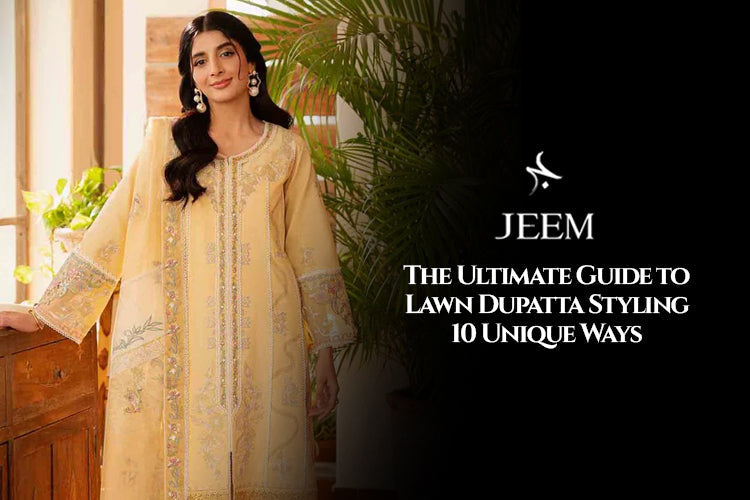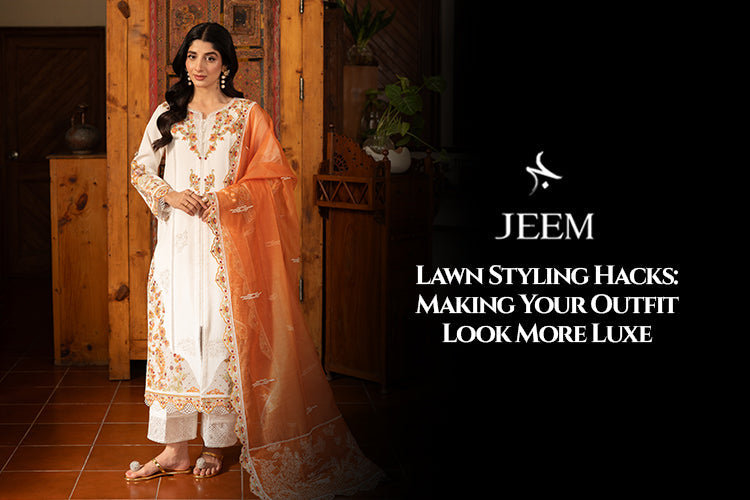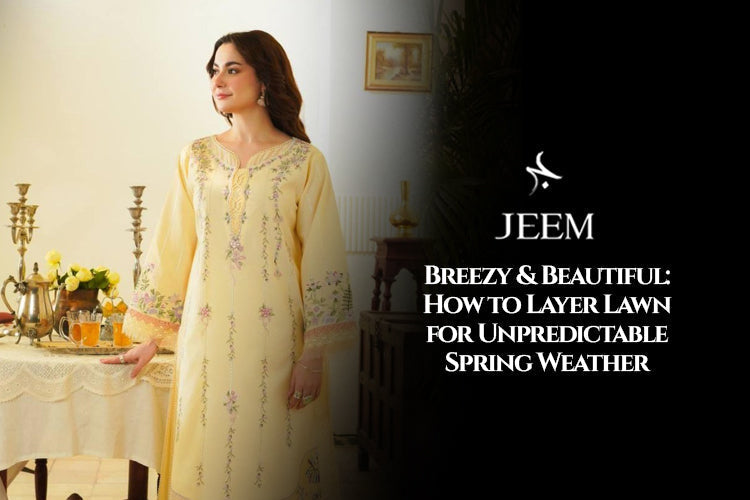
The Ultimate Guide to Lawn Dupatta Styling – 10 Unique Ways
A lawn dupatta is much more than an accessory—it’s an eye-catching piece that adds elegance and versatility to any ensemble. Whether styled traditionally or with a modern twist, a well-draped dupatta can instantly elevate your look.
The beauty of lawn dupattas lies in their lightweight and breathable nature, making them ideal for layering even in warm weather. Many women overlook the importance of draping styles, but the right one can transform a simple outfit into a stunning statement.
In this guide, we’ll explore 10 unique ways to style your lawn dupatta—from classic drapes to fashion-forward techniques—ensuring you always stand out with grace and confidence.
1. The Classic Shoulder Drape
One of the most timeless ways to wear Jeem lawn suit with dupatta is to let it rest evenly on both shoulders. This style:
- Works well for semi-formal and casual occasions.
- Gives a balanced, effortless look.
- Complements straight-cut outfits for a traditional aesthetic.
2. One-Sided Elegance
For a modern and sleek look, drape your dupatta over one shoulder while letting the other side fall naturally. This styling:
- Enhances minimalist outfits.
- Highlights delicate embroidery and subtle details.
- Creates a chic, effortless appeal.
3. The Belted Dupatta Look
Cinch your lawn dupatta at the waist with a slim belt to achieve a structured and stylish effect. Perfect for:
- Festive events and formal gatherings.
- Giving a well-put-together, high-fashion feel.
- Pairing with metallic or embroidered belts for added luxury.
4. The Side-Swept Drape
For a graceful, feminine touch, let your dupatta flow from one shoulder to the opposite arm. This style:
- Creates a soft, fluid movement.
- Works beautifully with printed or embroidered dupattas.
- Adds sophistication and charm to your outfit.
5. The Cape-Style Wrap
Transform your dupatta into a stylish cape by draping it over both shoulders. This look:
- Offers a contemporary and regal touch.
- Works best with organza or lightly embroidered lawn dupattas.
- Is ideal for formal occasions and evening events.
6. The Layered Front Drape
Pleat your dupatta neatly and drape it across the front like a shawl for an elegant, structured look. This technique:
- Provides chic layering for transitional seasons.
- Pairs well with monochrome outfits.
- Allows the dupattas’ intricate designs to stand out.
7. The Over-the-Head Drape
For a modest and traditional look, drape the dupatta over your head and let the other side fall over one shoulder. This style:
- Is perfect for festivals, religious gatherings, and cultural events
- Enhances elegance and grace
- Looks best with delicately embroidered or lace-bordered dupattas
8. The Loop-Around Style
Wrap your dupatta loosely around your neck, creating a chic, effortless look. This styling:
- Works well with textured or printed dupattas.
- Is practical and stylish for everyday wear.
- Keeps the dupatta in place while maintaining elegance.
9. The Half Saree Drape
For a fusion-inspired look, drape the dupatta over one shoulder and tuck the other end at the waist, similar to a saree drape. This technique:
- Creates a modern yet graceful silhouette
- Is perfect for special occasions
- Pairs beautifully with flowy ensembles
10. The Cross-Body Drape
Wear the dupatta diagonally across the torso and secure it at the waist for a structured, refined look. This style:
- Offers easy movement and comfort.
- Gives a sleek, polished vibe.
- Works well with embroidered or contrast-colored dupattas.
Conclusion
A lawn dupatta is an incredibly versatile piece that can transform any outfit with the right draping technique. Whether you prefer a classic, modern, or experimental style, these 10 creative dupatta drapes will instantly enhance your ensemble.
By playing around with different draping styles, textures, and layering techniques, you can create various looks suited for any occasion. The key to perfecting lawn dupatta styling lies in experimenting and finding the balance between traditional elegance and contemporary fashion.


